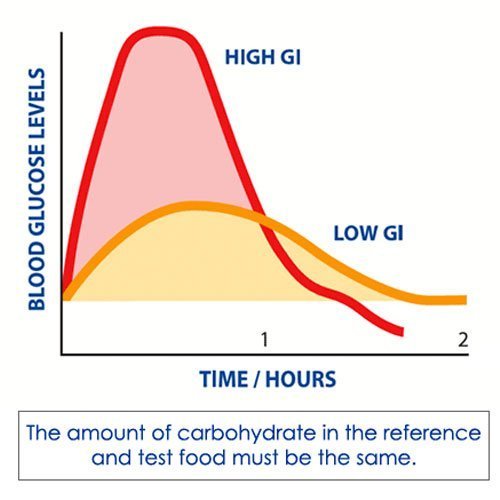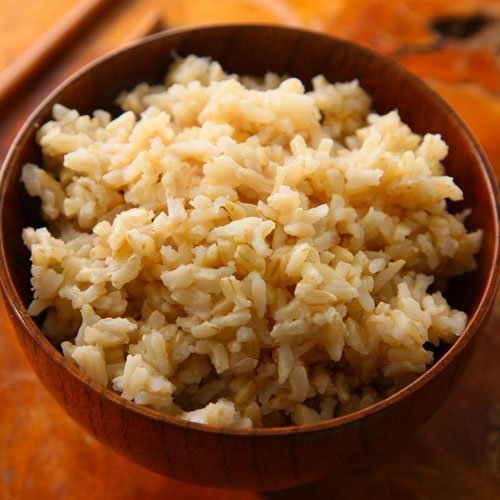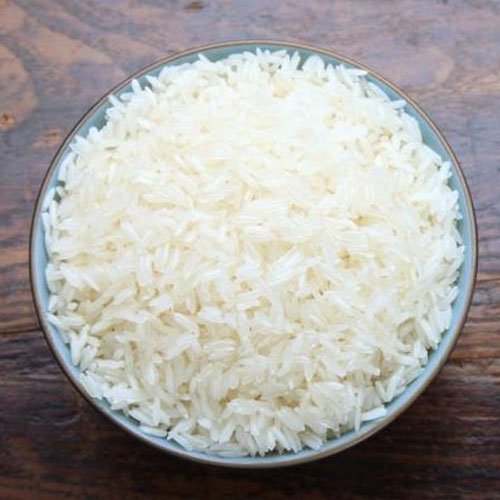Rice remains the most popular choice as a carb source when it comes to clean eating gym goers. The conversation, sometimes even the argument, surrounding whether or not you should select brown rice or white rice is an ongoing debate that still continues today. Some people claim that brown rice is the healthier version of the two, while others say there is more harm in brown rice than good. I set out to try to shed some light on this debate and make suggestions based on what your goals are.
It is important to understand what your goals are prior to selecting white or brown rice. It is also important to know that there are alternatives to rice that you can incorporate into your meal prep. If you are sold on rice as your carb source than you need to consider everything we discuss in this article prior to making your selection. When it is meal prep Sunday what will you choose: brown rice or white rice? Let us help you make that decision.
Glycemic Index
 The glycemic index classifies foods on a 100-point scale based on how quickly and how high they raise blood sugar levels. So why is this important to you? The higher the carb source ranks on the GI the higher they will raise your blood sugar, and quickly. Typically, the healthiest individual keeps their blood sugar levels consistent, not too low and not too high. However, there are times when you’d like to consume carb sources higher on the GI scale, specifically after physical activity.
The glycemic index classifies foods on a 100-point scale based on how quickly and how high they raise blood sugar levels. So why is this important to you? The higher the carb source ranks on the GI the higher they will raise your blood sugar, and quickly. Typically, the healthiest individual keeps their blood sugar levels consistent, not too low and not too high. However, there are times when you’d like to consume carb sources higher on the GI scale, specifically after physical activity.
Brown Rice
 Brown rice has become the most popular alternative to white rice. Restaurants, like Chipotle, Qdoba, and even some sushi restaurants offer brown rice as a “healthy” alternative to white rice. So when should you “error on the side of caution” and select brown rice over white rice? Well, before we can answer that question we need to look at the profile of brown rice.
Brown rice has become the most popular alternative to white rice. Restaurants, like Chipotle, Qdoba, and even some sushi restaurants offer brown rice as a “healthy” alternative to white rice. So when should you “error on the side of caution” and select brown rice over white rice? Well, before we can answer that question we need to look at the profile of brown rice.
100g of Brown Rice
Glycemic Index: 55
Calories: 111
Fats: 1g
Carbohydrates: 23g
Protein: 3g
Fullness Factor: 2.3
Brown rice falls right in the middle of the GI scale, which is perceived as a healthy carb source to maintain a steady glucose level in your blood. As it compares to white rice, brown rice has less calories and less carbohydrates. Brown rice also has a fullness factor, the higher the number the more “full” you feel when eating the source thus causing you to consume less while getting “fuller” more quickly, higher than white rice.
When Should I Select Brown Rice?
Brown rice is very healthy for anyone. There are no negative implications to brown rice. Brown rice is a whole grain and a good source of magnesium, phosphorus, selenium, thiamine, niacin, vitamin B6, an excellent source of manganese and high in fiber. There should be NO caution when consuming brown rice.
If your goal to weight loss or maintaining your weight, then brown rice is the selection for you. Brown rice will not give you any spikes in your glucose levels and insulin levels outside the norm leading to increased fat storage. It has less calories than white rice and you’ll consume less while feeling “fuller” quicker. If counting carbs and calories are in your wheelhouse than brown rice is for you.
White Rice
 White rice has come under a bad rap in recent years from healthy blogs claiming that there are other alternatives that are much better for you. Sure, there are alternatives that are healthy to white rice, but white rice is not bad for you. White rice has a place in a lot of people’s diets. To understand why it is important to understand the profile of white rice.
White rice has come under a bad rap in recent years from healthy blogs claiming that there are other alternatives that are much better for you. Sure, there are alternatives that are healthy to white rice, but white rice is not bad for you. White rice has a place in a lot of people’s diets. To understand why it is important to understand the profile of white rice.
100g of White Rice
Glycemic Index: 55-72 (depending on length of grain)
Calories: 130
Fats: 0g
Carbohydrates: 28g
Protein: 3g
Fullness Factor: 2.1
A big noticeable difference between white rice and brown rice is the GI score. Why does white rice vary? White rice is 56 on the GI scale for long-grain and 72 for short-grain. This is important to note when you select which version of white rice you want.
When you look at a GI score of 72 your health alarm may go off and tell you that this is bad. Why would you want to consume a food that is going to raise your blood sugar so much and so quickly? For non-diabetics you may want to rapidly increase your blood sugar (and thus your insulin levels) after physical activity. High GI foods speed up recovery as insulin helps move glucose into your muscle tissues thus helping with recovery. So a 72 may not be a bad GI score depending on your goals.
You will also notice that white rice has more calories and more carbs. If you are a very physical person this is not a bad thing. Calories and carbs are an energy source for your body to burn giving you energy when you need it.
The last thing that stands out is the fullness factor. White rice has a lower fullness factor than brown rice. This means that white rice is not as “filling” as brown rice. One cup of brown rice would make you feel more full than one cup of white rice. This is not a bad thing; it’s just how the foods differ. Just like brown rice there should be NO cautions taken when consuming white rice. You should consume white rice if it fits with your goals.
When Should I Select White Rice?
If your goal is to gain weight and muscle mass, you should select white rice. When you are gaining mass you want to increase your carb intake. White rice has more carbs than brown rice. Also, with a lower fullness factor you can consumer just as much white rice as brown rice plus leaving room for you to consumer your others macros (proteins and fats) without getting too full too quickly. With the higher GI score white rice is going to raise your glucose levels, this producing more insulin which helps aid glucose in the muscle tissue allowing you to recover faster.
Even if you are not trying to get as big as an ox but you are very active you should select white rice. White rice will replenish your energy levels. If you are active than the increase in glucose will still help with muscle recovery even though you are not trying to gain any size.
The one area I would suggest is if you are “bulking” but you are anything but lean than maybe you should select brown rice over white rice until you lean down. Starting lean on white rice is much better than starting “chubby” on white rice. However, most people who are trying to gain weight and muscle mass are typically already lean.
Moral of the Rice Debate
The moral of the story is that both brown rice and white rice are very healthy carb sources for your diets. There is a time for both depending on your goals. Weight loss and maintenance should lean in the direction of brown rice while weight gain and increase muscle mass should lean on the side of white rice. Do not fear either. However, if you want to change up your carb source do not be scared to try these alternatives to rice.







